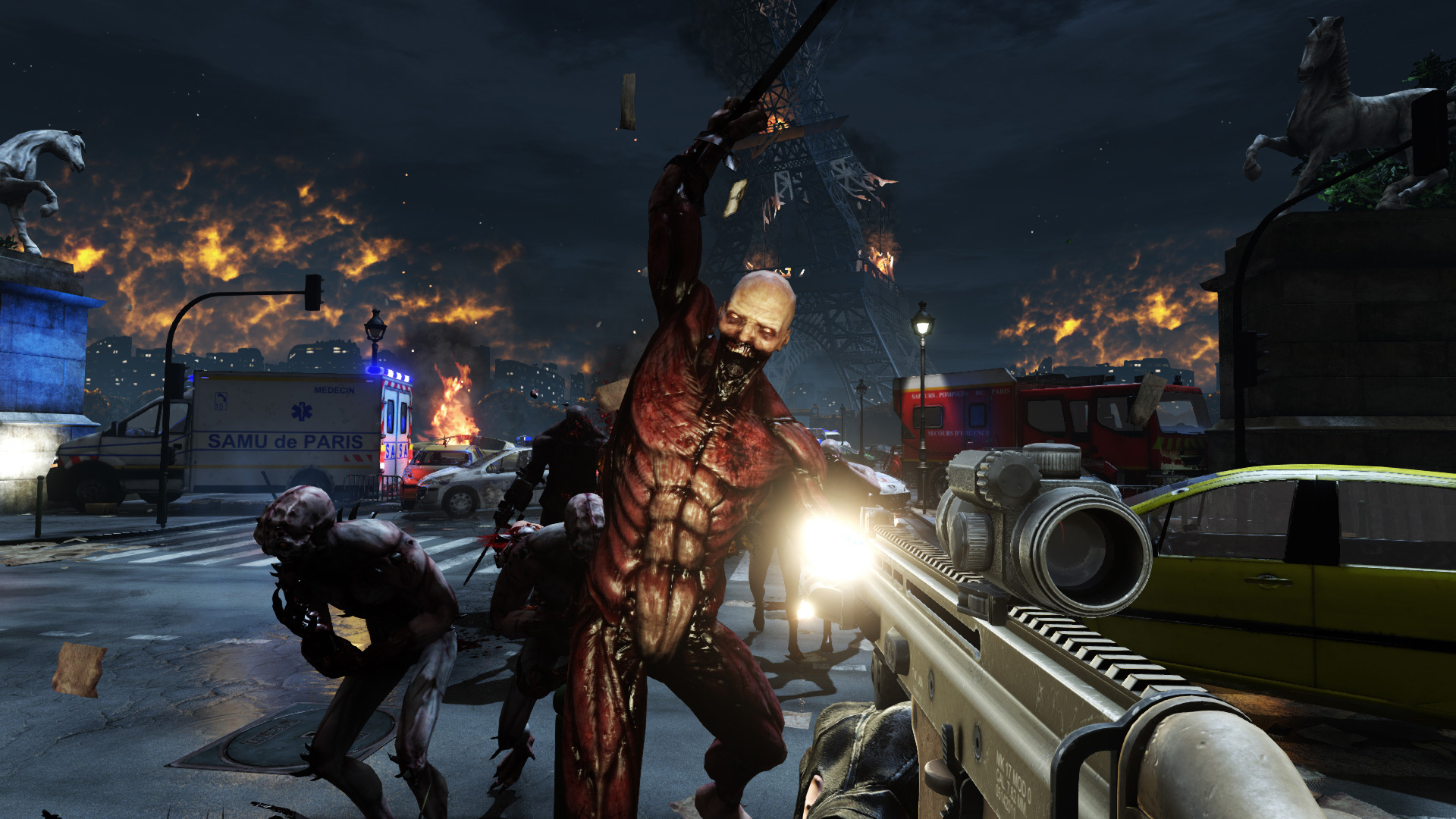
When Tripwire Interactive released the original Killing Floor back in 2009, based on and developed from an Unreal Tournament 2004 mod, few expected it to be the monstrous PC hit that it was.
Over three million copies sold later, there is considerable anticipation surrounding the release of Killing Floor 2 in the PC gaming community and we are glad to report that this sequel never fails to deliver.

NVIDIA’s technology is at the heart of, and strongly complements, Killing Floor 2, to the extent of which it is almost impossible to talk about this epic blastathon without mentioning the many graphical tech flourishes that will surely elevate it to one of the PC games of 2015, when we get around to putting those lists together later in the year.
For now, we thought it worth explaining exactly what NVIDIA brings to the undead apocalypse party in Killing Floor 2, if for no other reason than to persuade PC gamers to go and check it out for themselves. After all, who doesn’t like a good bit of zombie slaying to spice up their summer.
New maps show off destructible environments

There are a host of new playable maps in KF2, with the three maps from the Early Access Phase of the game already going down a treat with those Zed-slayers that have played them. And while the phrase “destructible environment” is something of an overused one in PC gaming, it’s worth repeating in the case of KF2, because it is the one thing that you’ll continue to be amazed by, across the varied playable maps and environments within the game.
Biotics Lab is an oppressive, high tech environment, which harks back to some of the lab settings from the original game. The real pleasure in playing this map is in discovering the many new corridors and chambers that open up strategic new opportunities to destroy the attacking hordes of Zeds in ever-cleverer, sneakier ways.
Keep up to date with the most important stories and the best deals, as picked by the PC Gamer team.
Opening up the Zed-killing zone a little, the second map is called Burning Paris, which is pretty much our current favourite, as it really allows for NVIDIA and the dev team at Tripwire to flex that “destructible environment” muscle a little, not to mention the fact that Paris has never looked so beautifully melancholic. Finally, the Outpost map is nicely light and open, which is perhaps not the best combination when you have a host of marauding undead Zeds on your case.
Frighteningly hyper-real Zeds casting a shadow over Europe

Tripwire has worked closely with NVIDIA to ensure that the new characters in KF2 are guaranteed to scare the bejesus out of you, with most of the undead foes returning from the first game in addition to a range of new hyper-realistic and ultra-frightening Zeds, including bunches of Cysts, (which are easy enough to kill one by one but tend to attack in groups) and the scarily fast and ultraviolent Slashers. There’s also a deeply unsettling new boss character to take on, a 100-year-old Nazi doctor called Hans Volter, who manages to keep himself going using some arcane Horzine tech.
Those fans of the first game will be happy to hear that the storyline in the sequel takes place only a month or so after the events in Killing Floor, though this time around the scope of the Zed invasion is considerably greater, as the undead horde has taken over the whole of Europe. In addition to the aforementioned Parisian level, players can expect to see a few more familiar Euro cityscapes and locations as they batter, blast and shoot their way through wave after wave of Zeds across the continent.
The attention to detail in the character design and modelling has been notably enhanced by something called Screen Space Sub-Surface Scattering (or SSSSS, for acronym fans!). Which basically means that light on the Zeds’ rotting skin is reflected or absorbed in such a way that it brings them fully to life. (Well, to an undead type of life. You get the gist!).
Surface reflections, dynamic lighting and creepy shadows

On which note, surface reflections, dynamic lighting and some of the creepiest in-game shadow effects we’ve ever seen play a massively important role more generally in KF2. The game also boasts Screen Space Reflections, realistic shadows and lighting, with some of the reflections from certain surfaces and from the ubiquitous pools of blood taking our breath away.
These and a myriad of other impressive graphical effects are testament to the labour of love that KF2 clearly represents for both Tripwire Interactive and for their tech partners at NVIDIA, producing a truly unbeatable undead blastathon that will have PC gamers returning again and again, whether in single-player mode or in group co-op mode.

Finally, no zombie-blaster is complete without hilariously BIG GUNS and KF2 certainly provides all the various character classes (or ‘perks’ as they are known in the game) with plenty of new weaponry to kill off the many hundreds of different types of Zeds you’ll encounter as you play. From standard shotguns and pistols through to the slightly more bizarre (Double-Barrel Broomstick anybody?) and the downright insane (the Berserker’s Pulverizer and Eviscerator) shooting the heads of zombies has never been this much fun before. Which, in itself, is quite a statement, as we’ve all played our fair share of undead-slaying shooters.

System Requirements (Minimum):
CPU: Core 2 Duo E8200 2.66GHz or Phenom II X2 545
GPU: GeForce GTS 250 or Radeon HD 4830
RAM: 3GB
OS: Win7 64
Recommended:
CPU: Core 2 Quad Q9550 2.83GHz or Phenom II X4 955
GPU: GeForce GTX 560 or Radeon HD 6950
RAM: 4GB
OS: Win7 64

